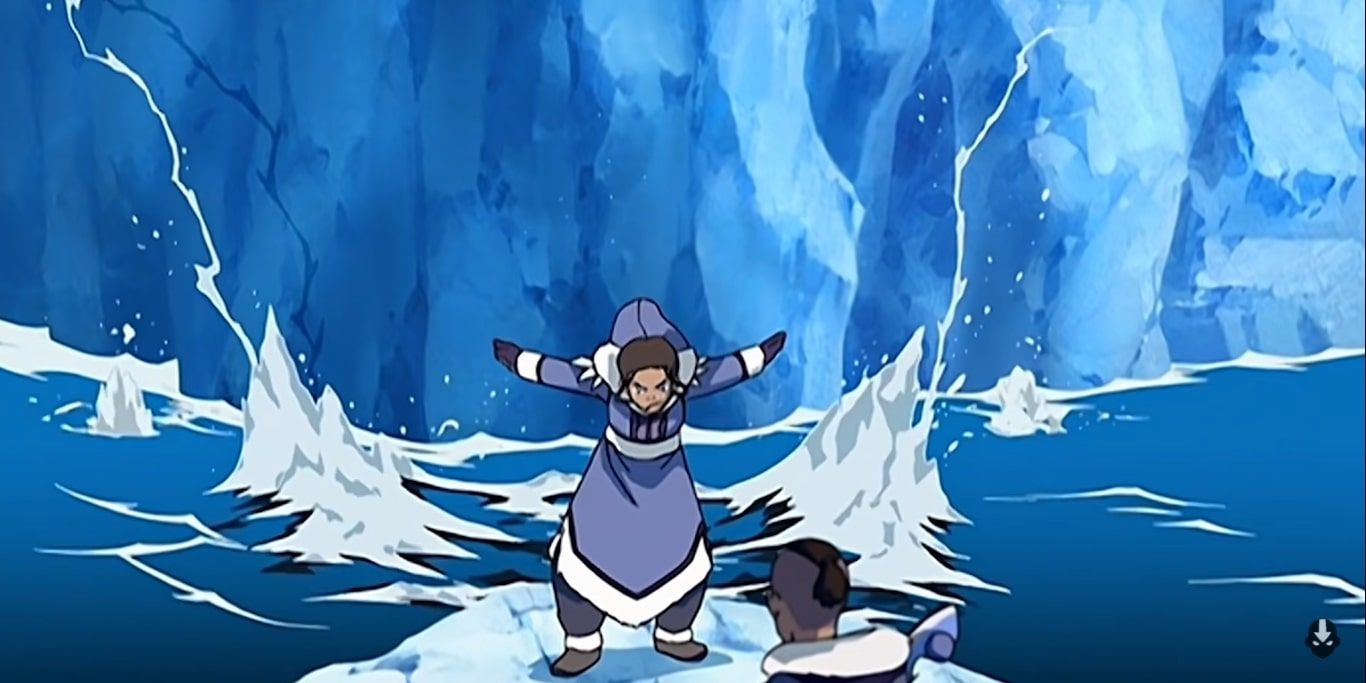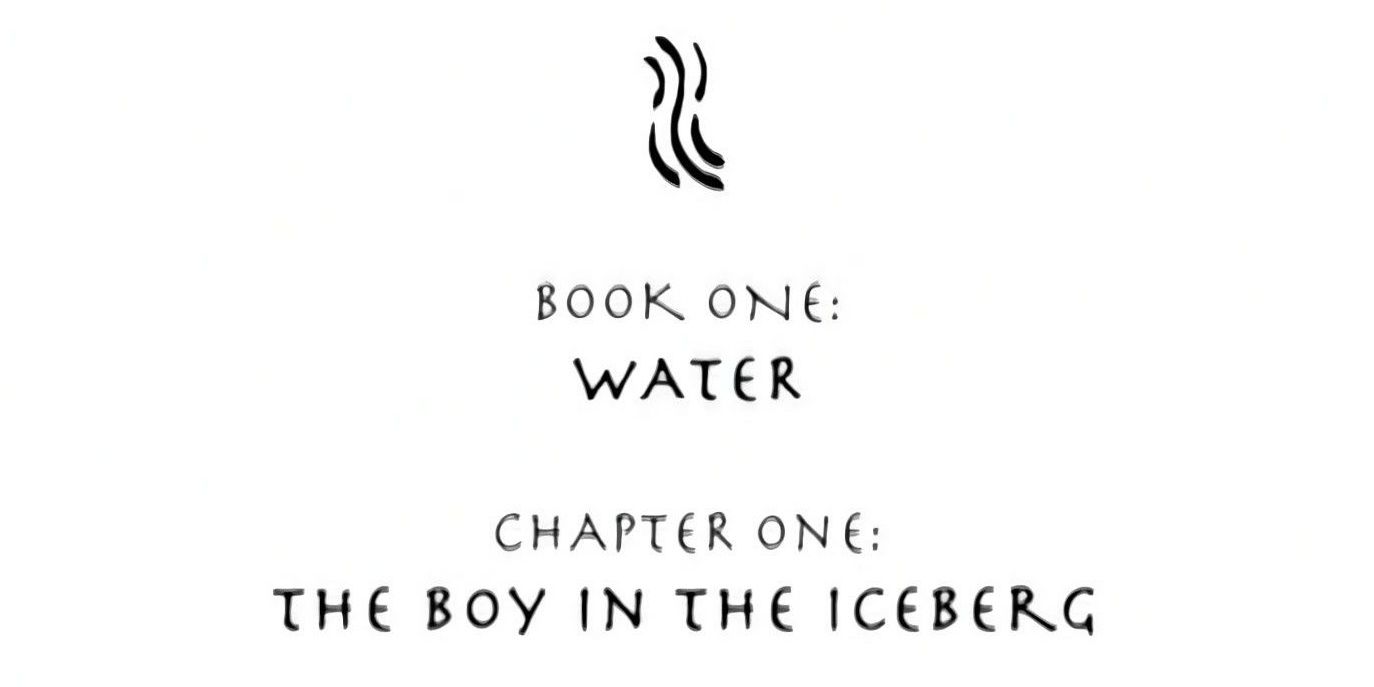Nearly two decades after its release, Avatar: The Last Airbender still stands as being one of the most profound and philosophical children’s shows in all of television history. This is thanks to endless reasons — from its immersive and fantastical world-building, to its powerful storytelling based on real-life historical events, endearing character arcs, and so much more.
That being said, the first episode of the series does a fantastic yet subtle job of setting the scene for major story arcs that would reveal themselves later in the narrative, as well as introducing small details that prompt the viewer to think even deeper about the show. Noticing these things may not only help viewers better understand the characters’ evolutions, but also the story’s key messages as a whole.
10 Prince Zuko Was The First Person To Recognize Aang As The Avatar
When that initial bolt of light pierced through the sky as Aang emerged from his century-long glacial confinement, Zuko was the first character to deduce that this powerful light source must only come from the Avatar himself.
Uncle Iroh was quick to brush this idea off with the assertion of celestial lights, and in a later episode when Zuko reveals to Katara and Sokka that Aang is the Avatar, they are both equally in shock and disbelief. Aang consciously tried to hide his Avatar status in the very beginning, but the one person he could not fool was the one whose honor hinged on his capture.
9 Uncle Iroh Lays An Air Tile On Top Of A Fire Tile In His Card Game
Before Uncle Iroh makes apparent his love for Pai Sho (a result of his ties to the Order of the White Lotus), we first see him playing a card game, similar to solitaire, but instead uses symbols of each of the four elements as the suits. While Zuko explains that he has found the Avatar, Iroh calmly lays an air tile on top of a fire tile. This may allude to the reincarnation cycle of the Avatars (an airbender following the late Avatar Roku, a firebender), or it can be a representation of Iroh’s internal belief that an airbender, specifically the Avatar, would ultimately defeat the Fire Nation.
8 Aang Was In The Avatar State For 100 Years
Just before the war against the Fire Nation began 100 years ago, Aang had entered the Avatar state under water and channeled this energy to form a giant sphere of ice around himself and Appa to save them from drowning in the catastrophic storm. To preserve their lives in these conditions, it is likely that Aang had to be in the Avatar state the entire time.
One might ask, how did Appa stay alive the entire time as well? This can be answered by assuming that the block of ice itself was constructed by energy from the Avatar state, allowing both Aang and his flying bison to remain alive until they were discovered.
7 Aang’s Advice To Katara Would Lead To Her Mastering Waterbending
Katara’s true waterbending potential is first revealed when she unintentionally shatters an ice formation, proving that her abilities are much stronger than she once thought, especially when throwing her inhibitions to the side. This correlates to Aang’s wisdom spoken to Katara as they explore an abandoned Fire Nation ship: “If you want to be a bender, you have to let go of fear.”
These words become a motif that reflects Katara’s waterbending evolution. In several early episodes, Katara is seen only using her bending for functional or defensive purposes, such as freezing attackers to protect herself. Later on, however, Katara learns to let go of fear in order to channel her bending in much more tacit and combative ways, taking her skills and courage to the highest level.
6 Sokka Displays Maturity By Protecting His Sister
One undeniable characteristic of Sokka and Katara’s bond is their love/hate sibling relationship. Katara, in Sokka’s eyes, is uptight and demanding, while to Katara, Sokka is immature and obnoxious, despite being older. However, this latter notion is suspended for a moment when Sokka protects his sister from the impact of Aang’s iceberg eruption, covering her head with his arms.
Even as empty-headed as Sokka may be sometimes, he knows what his priorities and duties are as a soldier and an older brother, and only continues to grow into this maturity and bravery as the show progresses.
5 Uncle Iroh’s Advice To Zuko Would Be Echoed By Zuko At The Sun Warriors’ City
When Zuko becomes increasingly frustrated while practicing firebending drills, his Uncle Iroh proclaims that he is exerting his firebending from all the wrong sources. He says, “The breath becomes energy in the body. The energy extends past your limbs and becomes fire!” Zuko’s bending instead appeared to be coming from a place of resentment and vengefulness.
Near the end of the series, after Zuko and Aang perform the Dragon Dance with the firebending masters at the Sun Warriors’ ancient city, Zuko utters, “I understand,” and Aang weighs in on this epiphany as well: “All this time, I thought firebending was destruction. But now I know what it really is… it’s energy and life.” Turns out Uncle Iroh was right all along — who knew?
4 Sokka’s Dirty Socks And Sexism Saved The World
When Sokka and Katara find themselves stranded after crashing their canoe, of all things, Sokka sighs, “Leave it to a girl to screw things up.” At this, Katara erupts into a tirade: “You are the most sexist, immature, nut-brained — I’m embarrassed to be related to you!” With each insult, she violently cracks the ice structure behind her even more, and with the final blow — “Have you ever smelled your dirty socks? Not pleasant!” — bursts it completely, allowing Aang’s iceberg to float to the surface.
That being said, it can be legitimately argued that Sokka’s behavior and Katara being fed up with him is what freed the Avatar in the first place. If it weren’t for this altercation happening at the right time, Fire Lord Ozai would have used Sozin’s Comet to destroy what was left of the world with nothing in his way.
3 Every Book Starts On A Ship And With Aang Waking Up From A Deep Sleep
Two things that the first episodes of each Book share in common with each other are that all of them begin on some form of ship, as well as with Aang waking up from a deep sleep. In Book 1, Sokka and Katara ride their canoe before discovering Aang, and of course, Aang is awoken from his century-long ice preservation.
In Book 2, Aang and friends journey to the Earth Kingdom on a Water Tribe ship as Aang jolts awake from a nightmare about being in the Avatar state. In Book 3, the first episode is titled “The Awakening,” and Aang arises from unconsciousness after sustaining serious injuries in combat, only to find himself aboard a Fire Nation ship.
2 First Introduction To Animal Hybrids In The Avatar Universe
When immersed in the series, it’s easy to catch on that every animal is a combination of two animals. Appa, for example, is a cross between a buffalo and a manatee, and Momo is essentially half bat, half lemur. Fans theorize that the spirits, who possessed animals ages ago, may be responsible for creating these animal hybrids of the world.
Whatever the case, viewers are introduced to this phenomenon in the first episode. When Aang’s Avatar energy beams across the sky, they are met with a ferocious roar from none other than a couple of tiger seals. And let’s not forget — later in the episode, when Aang and Katara go penguin sledding, the little guys are actually half otter, half penguin.
1 It Is The Only Episode That Extends The Avatar Theme To The Title Card
Every episode of the series uses the same song for the opening intro sequence — that is, the Avatar theme, but when each episode displays the Book number and the episode name, either a melody unique to that episode is played, or there is no sound at all. However, only in the first episode of the series is the Avatar theme carried out from the opening sequence into the display of the title card, giving viewers an extended version of the theme, as well as a much grander and more epic opening to the series.











